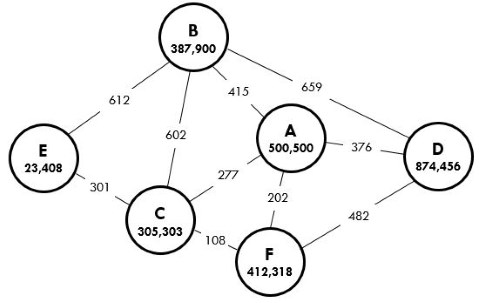The following questions are provided in PDF here:
with answer lines |
without answer lines
An
Electronic Answer Document (EAD) is provided for all questions/tasks.
Save this file to an accessible location before you start.
- State the name of an identifier for:
- An attribute in the Settlement class that is only accessible to subclasses of Settlement [1]
- A subroutine in the Settlement class that returns something other than a primitive value [1]
- A subclass [1]
- A local variable that is used to return a Boolean [1]
- A subroutine from the Company class that cannot be called from outside the Company class [1]
- A library string function called from the GetIndexOfCompany subroutine in the Simulation class [1]
- A collection attribute in the Company class [1]
- An instance of Settlement [1]
|
- Showing and explaining your working, give the probability of a call to ProcessCostOfFuelChangeEvent being made from the DisplayEventsAtDayEnd subroutine in the Simulation class. [3]
|
- Explain how validation might be added to the OpenOutlet subroutine of the Company class to prevent a new outlet being created beyond the bounds of the settlement. [3]
|
- AQA Burgers decide to install a large warehouse at their main headquarters (500,500) and would like to calculate the best order for their delivery truck to visit the other outlets in so that the shortest possible distance is travelled.
Note that there is a graph of all the outlets in the figure for Q6 which may help you to visualise the problem.
- State the Big O of this problem with n being the number of outlets. [1]
- This is an example of an intractable problem, state what is meant by this. [1]
- Describe and justify a heuristic method that could be used to reduce the time complexity of this problem so that it is no longer intractable. [2]
|
- Describe in full how the GetDistanceBetweenTwoOutlets subroutine of the Company class calculates the distance between two outlets. [4]
|

The distribution of outlets for the AQA Burgers restaurant chain can be represented using a graph such as the one shown here (not to scale):
An automated delivery network is being set up between AQA Burgers outlets. As such, each outlet needs to know the shortest route to each other outlet so that deliveries can be optimised.
Describe the steps (in any form you like) for an algorithm which determines the shortest route from one outlet to another. Assume that the automated vehicles are restricted to the routes shown above.
Remember, you do not need to write any code. [6]
|
- Explain the role of the variable UpOrDown in the ProcessCostOfFuelChangeEvent subroutine of the Simulation class. [3]
|
- In the Simulation constructor, the integer literals 100,000, 200 and 203 are passed to the Company constructor when creating the ‘AQA Burgers’ company. State the role of each of these integer literals. [3]
|
- Describe in full the operation of the GetIndexOfCompany subroutine in the Simulation class. [5]
|
- Describe the circumstances under which the ModifyCompany subroutine of the Simulation class would output the text ‘Invalid coordinates’. [3]
|
- Currently, a call to the LargeSettlement constructor could not result in a settlement that is smaller than 1,000 by 1,000. This is true even if negative numbers are entered by the user when prompted for additional x and y values. Explain how a call to the LargeSettlement constructor never results in a smaller settlement size. [3]
|
- Describe exactly how the ProcessDayEnd subroutine works in the Simulation class. [5]
|
- Copy and complete the following hierarchy chart for part of the Simulation class of the Skeleton Program.
You should not include calls to any library subroutines. [3]

|
- Describe how the program would respond to a call to the Company constructor using a category that is neither ‘fast food’, ‘family’ nor ‘named chef’. [2]
|


